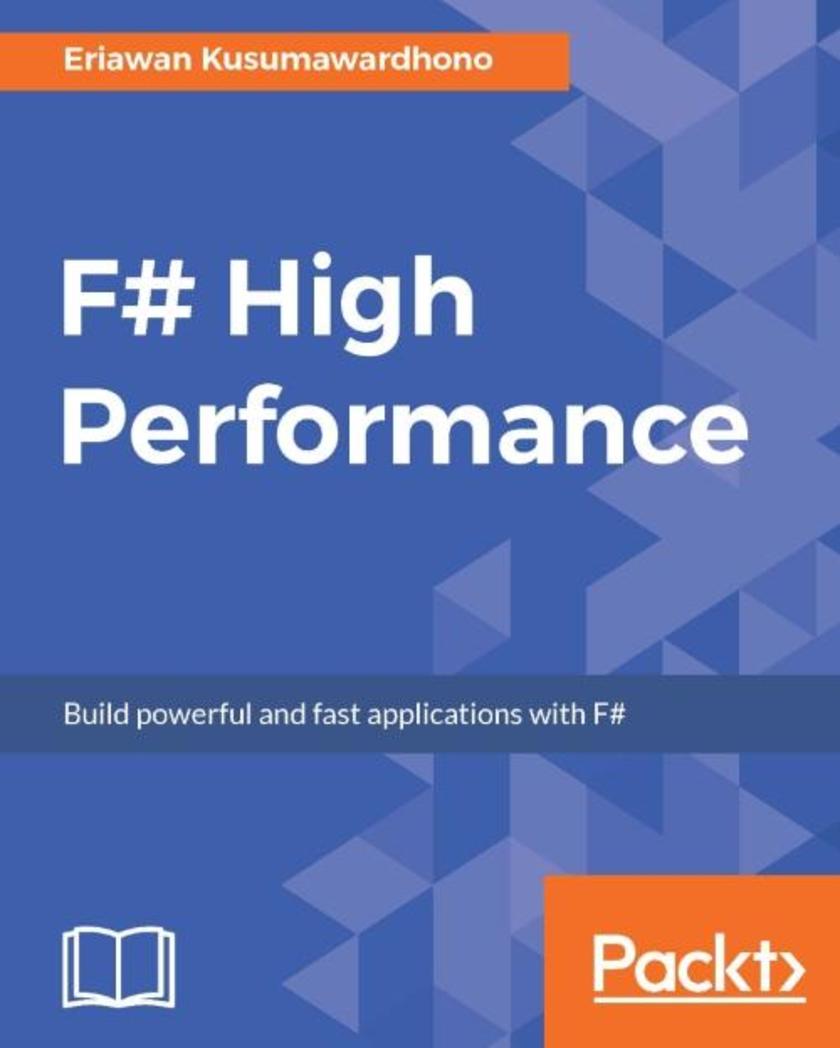
F# High Performance
¥80.65
Build powerful and fast applications with F# About This Book· Explore the advanced concurrency support in F# and .NET TPL·Covers major optimization techniques in F# to improve the performance of applications·Use Struct, Class and Record model, Interop with C# and VB without sacrificing performance. Who This Book Is For This book is for F# developers who want to build high-performance applications. Knowledge of functional programming would be helpful. What You Will Learn· Understand how the execution of functions in F# works·Identify common performance bottlenecks·Implement best practices to optimize performance·Use the available tooling to help measure performance·Combine the best practice of asynchronous and synchronous·Optimize further using various F# language constructs In Detail F# is a functional programming language and is used in enterprise applications that demand high performance. It has its own unique trait: it is a functional programming language and has OOP support at the same time. This book will help you make F# applications run faster with examples you can easily break down and take into your own work. You will be able to assess the performance of the program and identify bottlenecks. Beginning with a gentle overview of concurrency features in F#, you will get to know the advanced topics of concurrency optimizations in F#, such as F# message passing agent of MailboxProcessor and further interoperation with .NET TPL. Based on this knowledge, you will be able to enhance the performance optimizations when implementing and using other F# language features. The book also covers optimization techniques by using F# best practices and F# libraries. You will learn how the concepts of concurrency and parallel programming will help in improving the performance. With this, you would be able to take advantage of multi-core processors and track memory leaks, root causes, and CPU issues. Finally, you will be able to test their applications to achieve scalability. Style and approach This easy-to-follow guide is full of hands-on examples of real-world multithreading tasks. Each topic is explained and placed in context, and for the more inquisitive, there are also more in-depth details of the concepts used.
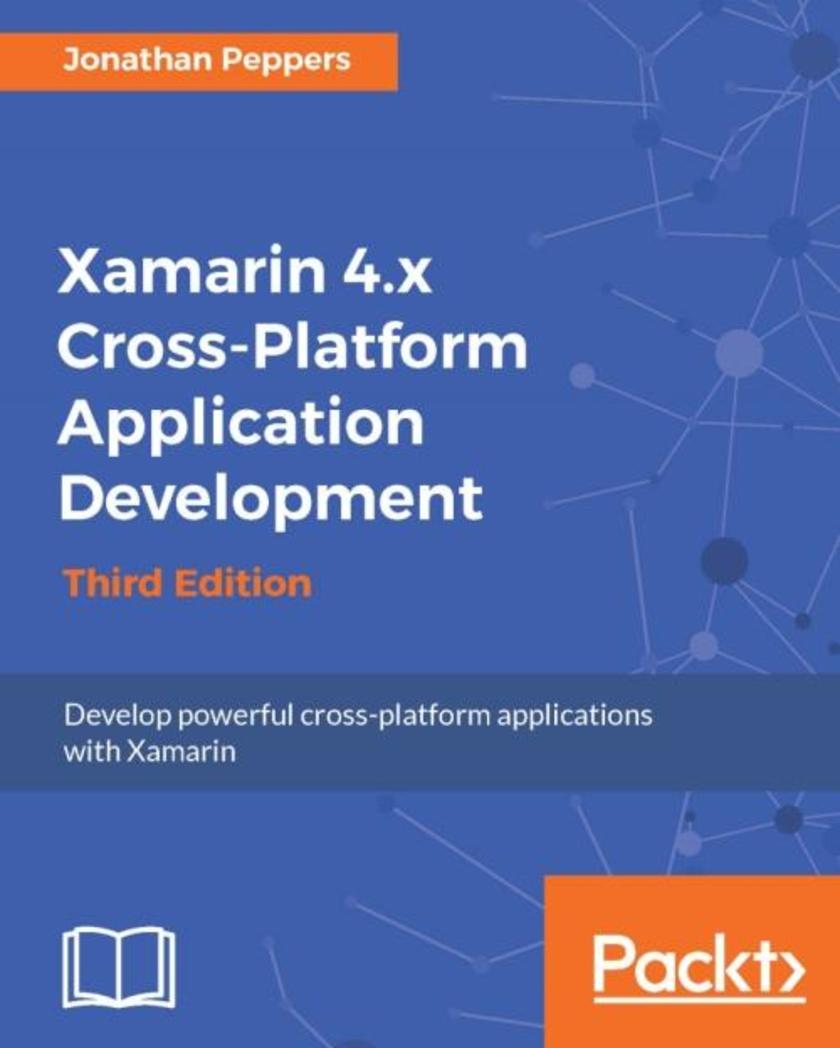
Xamarin 4.x Cross-Platform Application Development - Third Edition
¥80.65
Develop powerful cross-platform applications with Xamarin About This Book Write native cross-platform applications with Xamarin Design user interfaces that can be shared across Android, iOS, and Windows Phone using Xamarin.Forms Practical cross-platform development strategies Who This Book Is For If you are a developer with experience in C# and are just getting into mobile development, this is the book for you. This book will give you a head start with cross-platform development and will be the most useful to developers who have experience with desktop applications or the web. What You Will Learn Apple’s MVC design pattern The Android activity lifecycle Share C# code across platforms and call native Objective-C or Java libraries from C# Create a real web service back end in Windows Azure using SQL Azure as database storage Set up third-party libraries such as NuGet and Objective Sharpie in many different ways, and port a desktop .NET library to Xamarin Use Xamarin.Mobile for camera, contacts, and location In Detail Xamarin is a leading cross-platform application development tool used by top companies such as Coca-Cola, Honeywell, and Alaska Airlines to build apps. Version 4 features significant updates to the platform including the release of Xamarin.Forms 2.0 and improvements have been made to the iOS and Android designers. Xamarin was acquired by Microsoft so it is now a part of the Visual Studio family. This book will show you how to build applications for iOS, Android, and Windows. You will be walked through the process of creating an application that comes complete with a back-end web service and native features such as GPS location, camera, push notifications, and other core features. Additionally, you’ll learn how to use external libraries with Xamarin and Xamarin.Forms to create user interfaces. This book also provides instructions for Visual Studio and Windows. This edition has been updated with new screenshots and detailed steps to provide you with a holistic overview of the new features in Xamarin 4. Style and approach This book offers a tutorial style approach to teach you the skills required to develop end-to-end cross-platform solutions with Xamarin.
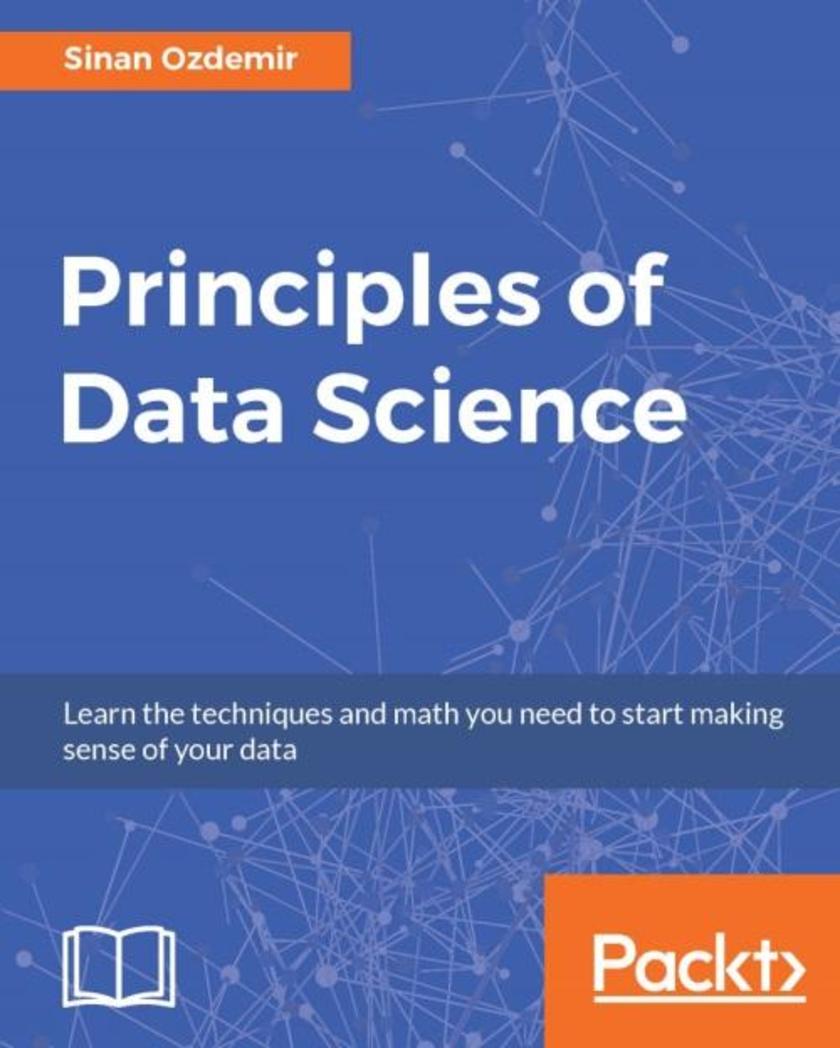
Principles of Data Science
¥80.65
Learn the techniques and math you need to start making sense of your data About This Book Enhance your knowledge of coding with data science theory for practical insight into data science and analysis More than just a math class, learn how to perform real-world data science tasks with R and Python Create actionable insights and transform raw data into tangible value Who This Book Is For You should be fairly well acquainted with basic algebra and should feel comfortable reading snippets of R/Python as well as pseudo code. You should have the urge to learn and apply the techniques put forth in this book on either your own data sets or those provided to you. If you have the basic math skills but want to apply them in data science or you have good programming skills but lack math, then this book is for you. What You Will Learn Get to know the five most important steps of data science Use your data intelligently and learn how to handle it with care Bridge the gap between mathematics and programming Learn about probability, calculus, and how to use statistical models to control and clean your data and drive actionable results Build and evaluate baseline machine learning models Explore the most effective metrics to determine the success of your machine learning models Create data visualizations that communicate actionable insights Read and apply machine learning concepts to your problems and make actual predictions In Detail Need to turn your skills at programming into effective data science skillsPrinciples of Data Science is created to help you join the dots between mathematics, programming, and business analysis. With this book, you’ll feel confident about asking—and answering—complex and sophisticated questions of your data to move from abstract and raw statistics to actionable ideas. With a unique approach that bridges the gap between mathematics and computer science, this books takes you through the entire data science pipeline. Beginning with cleaning and preparing data, and effective data mining strategies and techniques, you’ll move on to build a comprehensive picture of how every piece of the data science puzzle fits together. Learn the fundamentals of computational mathematics and statistics, as well as some pseudocode being used today by data scientists and analysts. You’ll get to grips with machine learning, discover the statistical models that help you take control and navigate even the densest datasets, and find out how to create powerful visualizations that communicate what your data means. Style and approach This is an easy-to-understand and accessible tutorial. It is a step-by-step guide with use cases, examples, and illustrations to get you well-versed with the concepts of data science. Along with explaining the fundamentals, the book will also introduce you to slightly advanced concepts later on and will help you implement these techniques in the real world.
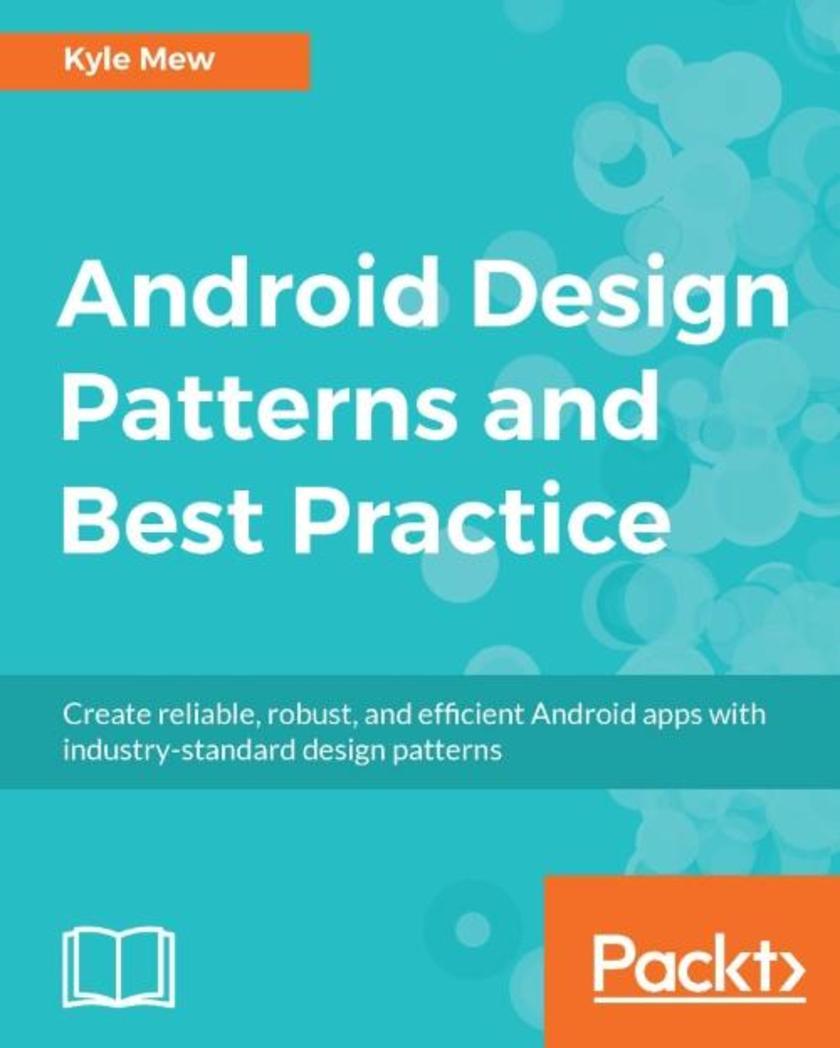
Android Design Patterns and Best Practice
¥80.65
Create reliable, robust, and efficient Android apps with industry-standard design patterns About This Book Create efficient object interaction patterns for faster and more efficient Android development Get into efficient and fast app development and start making money from your android apps Implement industry-standard design patterns and best practices to reduce your app development time drastically Who This Book Is For This book is intended for Android developers who have some basic android development experience. Basic Java programming knowledge is a must to get the most out of this book. What You Will Learn Build a simple app and run it on real and emulated devices Explore the WYSIWYG and XML approaches to material design provided within Android Studio Detect user activities by using touch screen listeners, gesture detection, and reading sensors Apply transitions and shared elements to employ elegant animations and efficiently use the minimal screen space of mobile devices Develop apps that automatically apply the best layouts for different devices by using designated directories Socialize in the digital word by connecting your app to social media Make your apps available to the largest possible audience with the AppCompat support library In Detail Are you an Android developer with some experience under your beltAre you wondering how the experts create efficient and good-looking appsThen your wait will end with this book! We will teach you about different Android development patterns that will enable you to write clean code and make your app stand out from the crowd. The book starts by introducing the Android development environment and exploring the support libraries. You will gradually explore the different design and layout patterns and get to know the best practices of how to use them together. Then you’ll then develop an application that will help you grasp activities, services, and broadcasts and their roles in Android development. Moving on, you will add user-detecting classes and APIs such as gesture detection, touch screen listeners, and sensors to your app. You will also learn to adapt your app to run on tablets and other devices and platforms, including Android Wear, auto, and TV. Finally, you will see how to connect your app to social media and explore deployment patterns as well as the best publishing and monetizing practices. The book will start by introducing the Android development environment and exploring the support libraries. You will gradually explore the different Design and layout patterns and learn the best practices on how to use them together. You will then develop an application that will help you grasp Activities, Services and Broadcasts and their roles in Android development. Moving on, you will add user detecting classes and APIs such as at gesture detection, touch screen listeners and sensors to our app. You will also learn to adapt your app to run on tablets and other devices and platforms, including Android Wear, Auto, and TV. Finally, you will learn to connect your app to social media and explore deployment patterns and best publishing and monetizing practices. Style and approach This book takes a step-by-step approach. The steps are explained using real-world practical examples. Each chapter uses case studies where we show you how using design patterns will help in your development process.
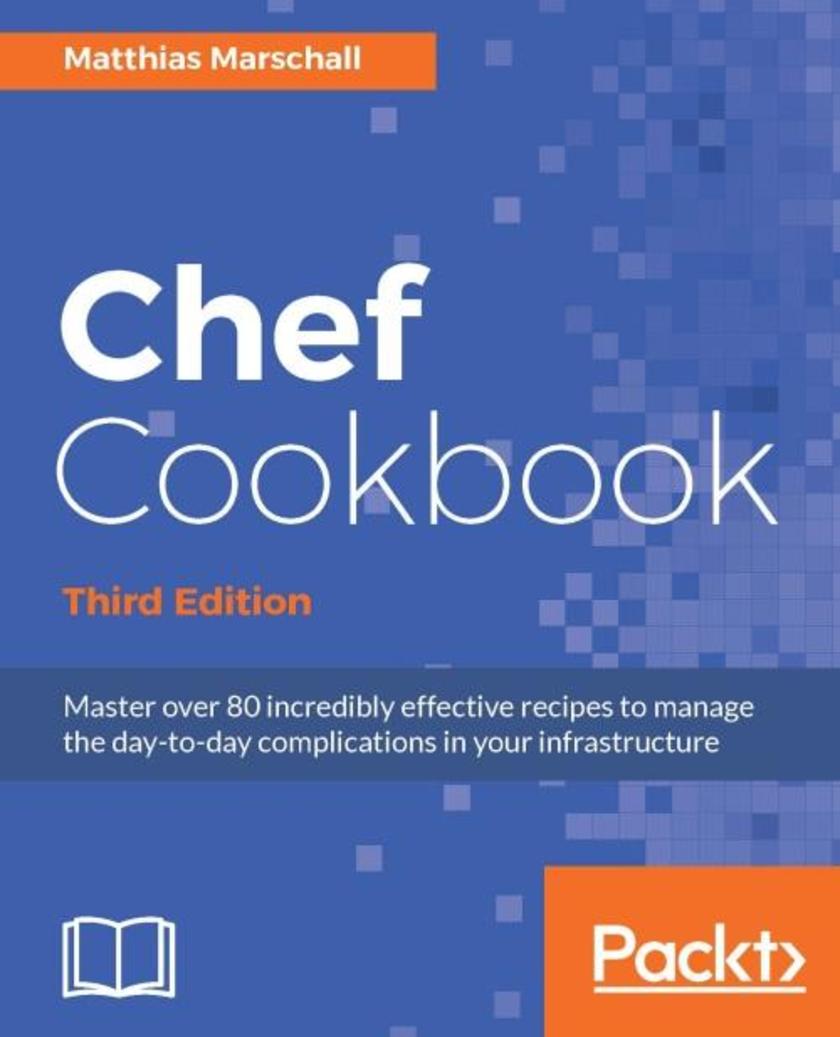
Chef Cookbook - Third Edition
¥80.65
Master over 80 incredibly effective recipes to manage the day-to-day complications in your infrastructure About This Book Immediately apply Devops techniques and methods, then combine them with powerful Chef tools to manage and automate your infrastructure Address the growing challenges of code management, cloud, and virtualization with Chef quickly Explore and implement the important aspects of Chef Automate using this recipe-based guide Who This Book Is For This book is for system engineers and administrators who have a fundamental understanding of information management systems and infrastructure. It is also for DevOps Engineers, IT professionals, and organizations who want to automate and gain greater control of their infrastructures with Chef. No experience with Chef is needed, but may help. What You Will Learn Test your cookbooks with Test Kitchen Manage cookbook dependencies with Berkshelf Use reporting to keep track of what happens during the execution of chef-client runs across all of the machines Create custom Ohai and Knife plugins Build a high-availability service using Heartbeat Use a HAProxy to load-balance multiple web servers In Detail Chef is a configuration management tool that lets you automate your more cumbersome IT infrastructure processes and control a large network of computers (and virtual machines) from one master server. This book will help you solve everyday problems with your IT infrastructure with Chef. It will start with recipes that show you how to effectively manage your infrastructure and solve problems with users, applications, and automation. You will then come across a new testing framework, InSpec, to test any node in your infrastructure. Further on, you will learn to customize plugins and write cross-platform cookbooks depending on the platform. You will also install packages from a third-party repository and learn how to manage users and applications. Toward the end, you will build high-availability services and explore what Habitat is and how you can implement it. Style and approach This book follows a recipe-based approach and covers all the important topics you need to know. If you don't want to dig through a whole book before you get started, this book is for you, as it features a set of independent recipes you can try out immediately.
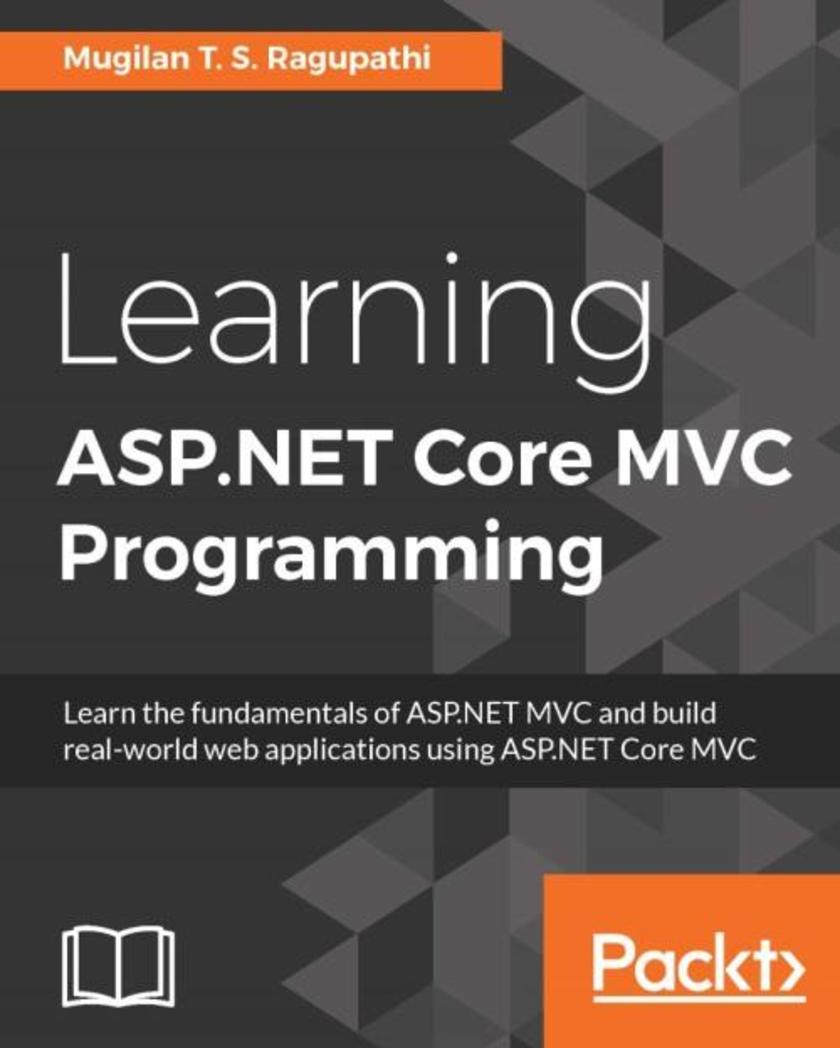
Learning ASP.NET Core MVC Programming
¥80.65
Learn the fundamentals of ASP.NET MVC and build real-world web applications using ASP.NET Core MVC About This Book Get a first-principles coverage of ASP.NET MVC and the latest release, Core This book is uniquely designed for developers who are looking to transition their skills into the .NET development field The standalone chapter structure leaves you free to explore ASP.NET MVC to immediately solve your pain points Who This Book Is For This book is for developers who want to learn to build web applications using ASP.NET Core, developers who want to make a career building web applications using Microsoft technology, and developers who are working in Ruby on Rails or other web frameworks and want to learn ASP.NET Core MVC. No knowledge of the ASP.NET platform or the .NET platform is required. Even though you do not need to have experience in C#, an understanding of the basic constructs (loops, conditionals, classes, and objects) of any modern programming language would be helpful. What You Will Learn Get to know the concepts of ASP.NET MVC and build a new static web page using HTML, CSS, and jQuery Set up a development environment and run a sample application using the template Create a Controller with action methods Build a view using several features of the Razor View engine Construct a Model for ASP.NET Core MVC application Devise a custom mechanism to provide maximum flexibility to your application through routing Validate the user input on the client side using jQuery Enhance your applications using Bootstrap Explore new configuration and deployment scenarios—step by step guide to deploying ASP.NET Core web application in Linux In Detail ASP.NET Core MVC helps you build robust web applications using the Model-View-Controller design. This guide will help you in building applications which can be deployed on non-windows platforms such as Linux. In today’s age, it is crucial that you possess the ability to separate the programming and business logic, and this is exactly what ASP.NET Core MVC application will help you achieve. This version comes with a number of improvements that enable fast, TDD-friendly development to create sophisticated applications. You would also learn the fundamentals of Entity framework and on how to use the same in ASP.NET Core web applications. The book presents the fundamentals and philosophies of ASP.NET Core. Starting with an overview of the MVC pattern, we quickly dive into the aspects that you need to know to get started with ASP.NET. You will learn about the core architecture of model, view, and control. Integrating your application with Bootstrap, validating user input, interacting with databases, and deploying your application are some of the things that you will be able to execute with this fast-paced guide. The end of the book will test your knowledge as you build a fully working sample application using the skills you’ve learned throughout the book. Style and approach This book takes a first-principles approach to help you understand and implement ASP.NET MVC solutions. It is focused primarily on giving you practical skills rather than the old conventional theoretical teaching.
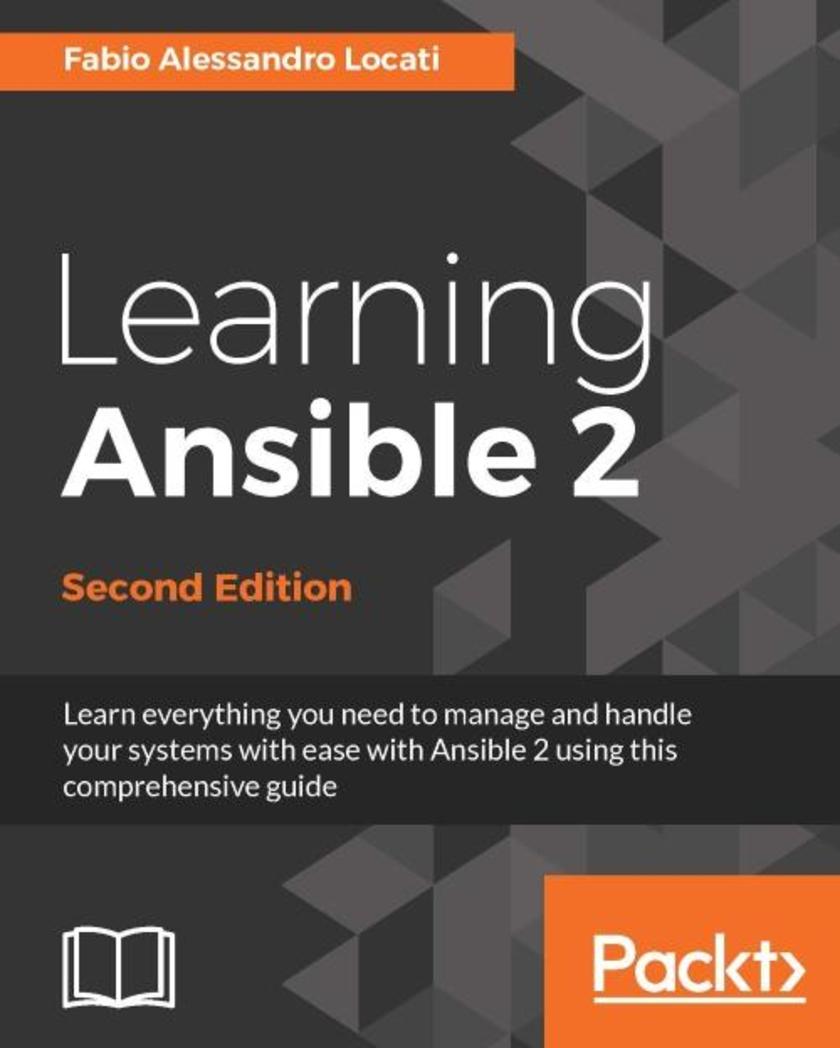
Learning Ansible 2 - Second Edition
¥80.65
Learn everything you need to manage and handle your systems with ease with Ansible 2 using this comprehensive guide About This Book Simplify the automation of applications and systems using the newest version of Ansible Get acquainted with fundamentals of Ansible such as playbooks, modules, and various testing strategies A comprehensive, learning guide that provides you with great skills to automate your organization’s infrastructure using Ansible 2 Who This Book Is For The book is for sys admins who want to automate their organization’s infrastructure using Ansible 2. No prior knowledge of Ansible is required. What You Will Learn Set up Ansible 2 and an Ansible 2 project in a future-proof way Perform basic operations with Ansible 2 such as creating, copying, moving, changing, and deleting files, and creating and deleting users Deploy complete cloud environments using Ansible 2 on AWS and DigitalOcean Explore complex operations with Ansible 2 (Ansible vault, e-mails, and Nagios) Develop and test Ansible playbooks Write a custom module and test it In Detail Ansible is an open source automation platform that assists organizations with tasks such as configuration management, application deployment, orchestration, and task automation. With Ansible, even complex tasks can be handled easier than before. In this book, you will learn about the fundamentals and practical aspects of Ansible 2 by diving deeply into topics such as installation (Linux, BSD, and Windows Support), playbooks, modules, various testing strategies, provisioning, deployment, and orchestration. In this book, you will get accustomed with the new features of Ansible 2 such as cleaner architecture, task blocks, playbook parsing, new execution strategy plugins, and modules. You will also learn how to integrate Ansible with cloud platforms such as AWS. The book ends with the enterprise versions of Ansible, Ansible Tower and Ansible Galaxy, where you will learn to interact Ansible with different OSes to speed up your work to previously unseen levels By the end of the book, you’ll able to leverage the Ansible parameters to create expeditious tasks for your organization by implementing the Ansible 2 techniques and paradigms. Style and approach This book is a step-by-step learning guide on the all new Ansible 2, which is an ideal configuration management tool.
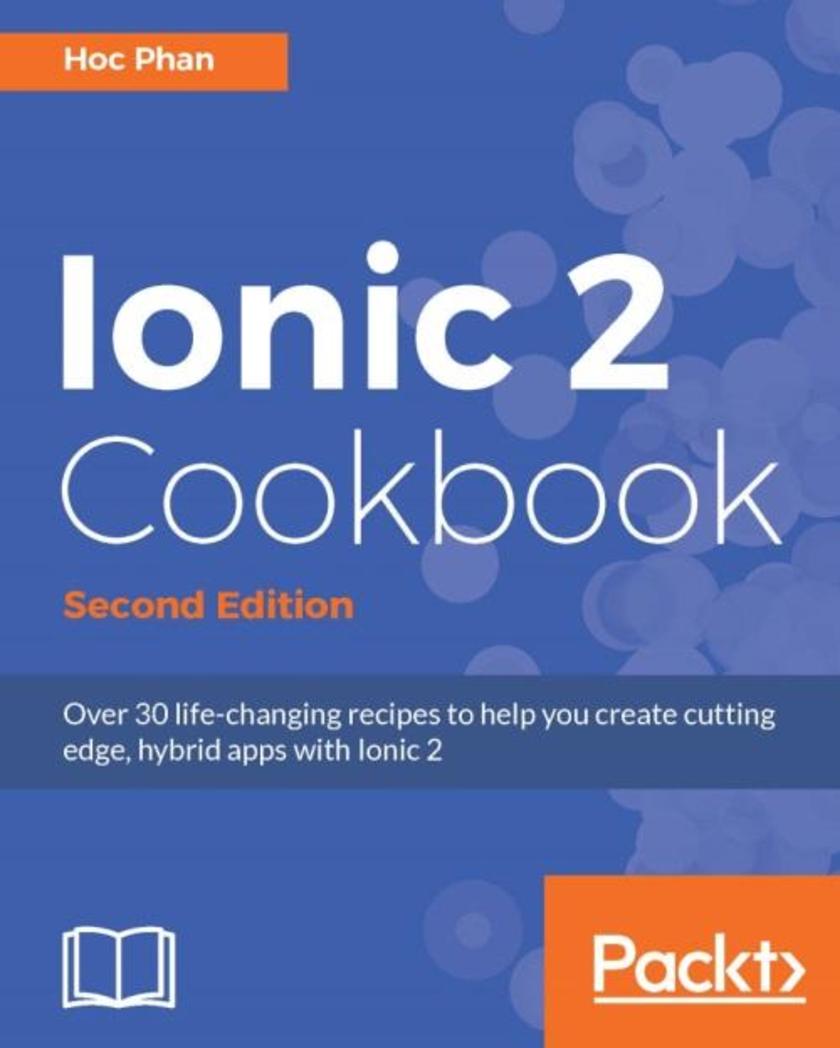
Ionic 2 Cookbook - Second Edition
¥80.65
Over 30 life-changing recipes to help you create cutting edge, hybrid apps with Ionic 2 About This Book Leverage Ionic 2 and its exciting new features to create cutting edge real-time apps Work through simple recipes to address your problems directly and solve them effectively Get examples at each step to guide you on your learning curve Who This Book Is For This book is for front end JavaScript developers who know the basics of JavaScript programming. No prior knowledge of Ionic is required to get the most of this book. What You Will Learn Create custom UIs using Angular 2 directives Make the best use of REST APIs to submit forms Create beautiful animations and graphics in the application Embed videos and other media into the app Access native device functionalities such as a camera and maps using ngCordova Theme the application based on the various platform styles available Publish your application to a variety of platforms Leverage Angular 2 events and Ionic-specific events to communicate In Detail Developing real-time apps is the need of the hour, and apps that deal with humongous amounts of user data and real-time information that needs to be updated frequently are in high demand. Currently, one of the most popular frameworks for this task is Ionic Framework, which is undergoing a major makeover. This book will get you started with Ionic and help you create Angular 2 components that interact with templates. From there, you’ll work with Ionic components and find out how to share data efficiently between them. You’ll discover how to make the best use of the REST API to handle back-end services and then move on to animating the application to make it look pretty. You’ll learn to add in a local push notification in order to test the app. You’ll work with Cordova to support native functionalities on both iOS and Android. From there, you’ll get to grips with using the default themes for each platform as well as customizing your own. Finally, you’ll see how best to deploy your app to different platforms. This book will solve all your Ionic-related issues through dedicated recipes that will help you get the best out of Ionic. Style and approach This book is a recipe-based solution to all your Ionic 2 related problems and will help you create cutting edge real-time apps with ease through simple-to-understand step-by-step recipes.
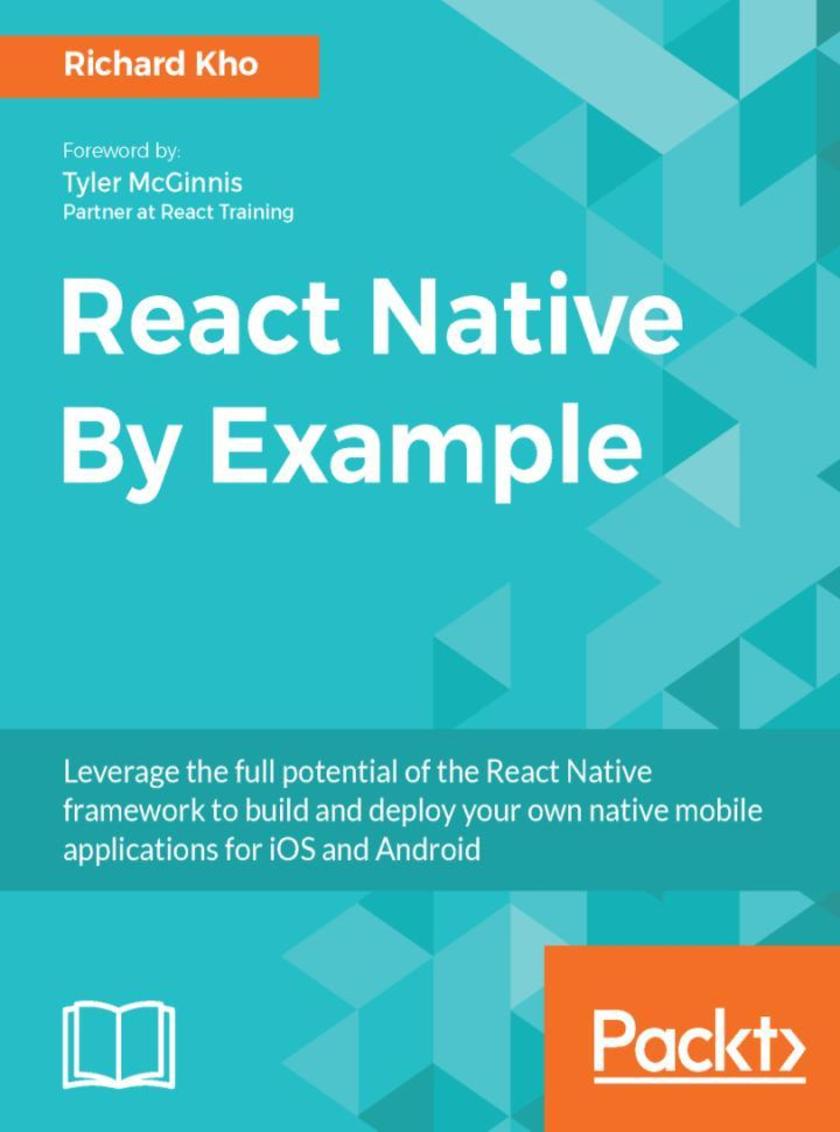
React Native By Example
¥80.65
React Native's ability to build performant mobile applications with JavaScript has resulted in its popularity amongst developers. Developers now have the luxury to create incredible mobile experiences that look and feel native to their platforms with the comfort of a well-known language and the popular React.js library. This book will show you how to build your own native mobile applications for the iOS and Android platforms while leveraging the finesse and simplicity of JavaScript and React. Throughout the book you will build three projects, each of increasing complexity. You will also link up with the third-party Facebook SDK, convert an app to support the Redux architecture, and learn the process involved in making your apps available for sale on the iOS App Store and Google Play. At the end of this book, you will have learned and implemented a wide breadth of core APIs and components found in the React Native framework that are necessary in creating great mobile experiences. What you will learn ?How to create mobile-performant iOS and Android apps using JavaScript and React ?The potential of each API and component, putting them into practice throughout the course of three projects ?The process of integrating the Facebook SDK to build an app that connects to third-party data ?Every step taken to implement Redux, a popular state management library, in your mobile apps
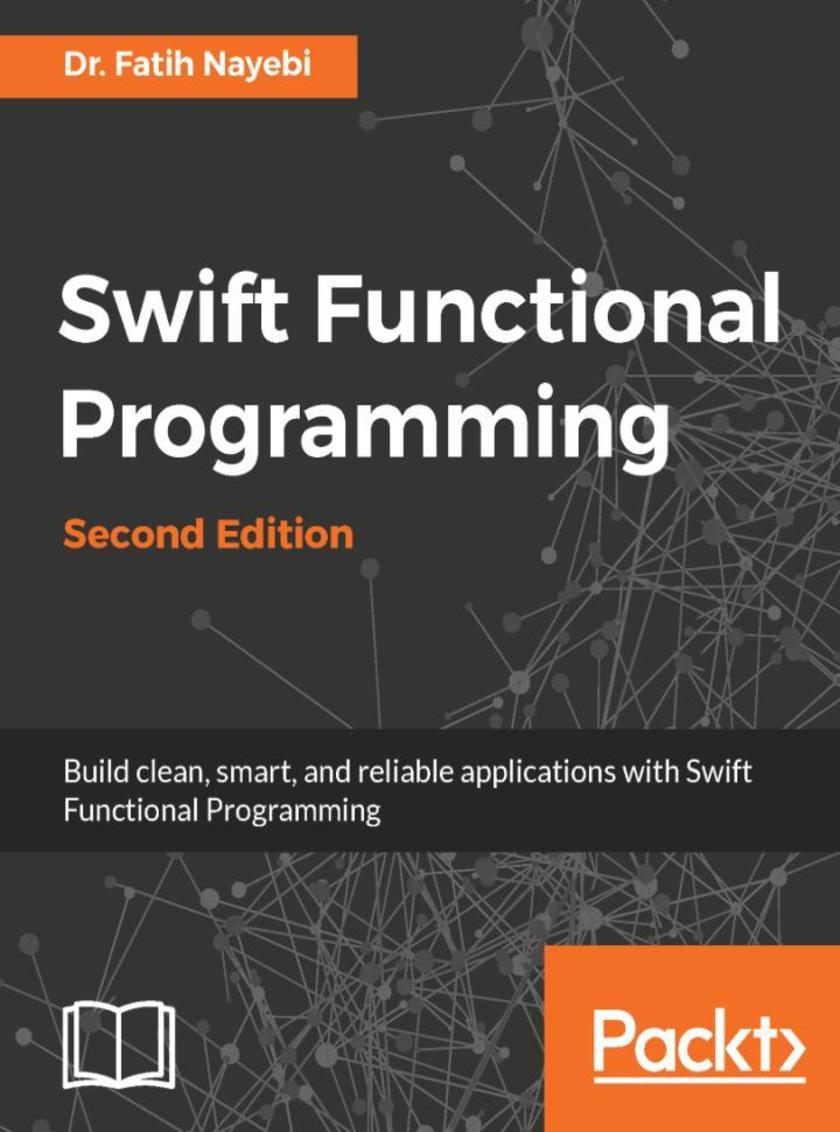
Swift Functional Programming - Second Edition
¥80.65
Bring the power of functional programming to Swift to develop clean, smart, scalable and reliable applications. About This Book ?Written for the latest version of Swift, this is a comprehensive guide that introduces iOS, Web and macOS developers to the all-new world of functional programming that has so far been alien to them ?Get familiar with using functional programming alongside existing OOP techniques so you can get the best of both worlds and develop clean, robust, and scalable code ?Develop a case study on example backend API with Swift and Vapor Framework and an iOS application with Functional Programming, Protocol-Oriented Programming, Functional Reactive Programming, and Object-Oriented Programming techniques Who This Book Is For Meant for a reader who knows object-oriented programming, has some experience with Objective-C/Swift programming languages and wants to further enhance his skills with functional programming techniques with Swift 3.x. What You Will Learn ?Understand what functional programming is and why it matters ?Understand custom operators, function composition, currying, recursion, and memoization ?Explore algebraic data types, pattern matching, generics, associated type protocols, and type erasure ?Get acquainted with higher-kinded types and higher-order functions using practical examples ?Get familiar with functional and non-functional ways to deal with optionals ?Make use of functional data structures such as semigroup, monoid, binary search tree, linked list, stack, and lazy list ?Understand the importance of immutability, copy constructors, and lenses
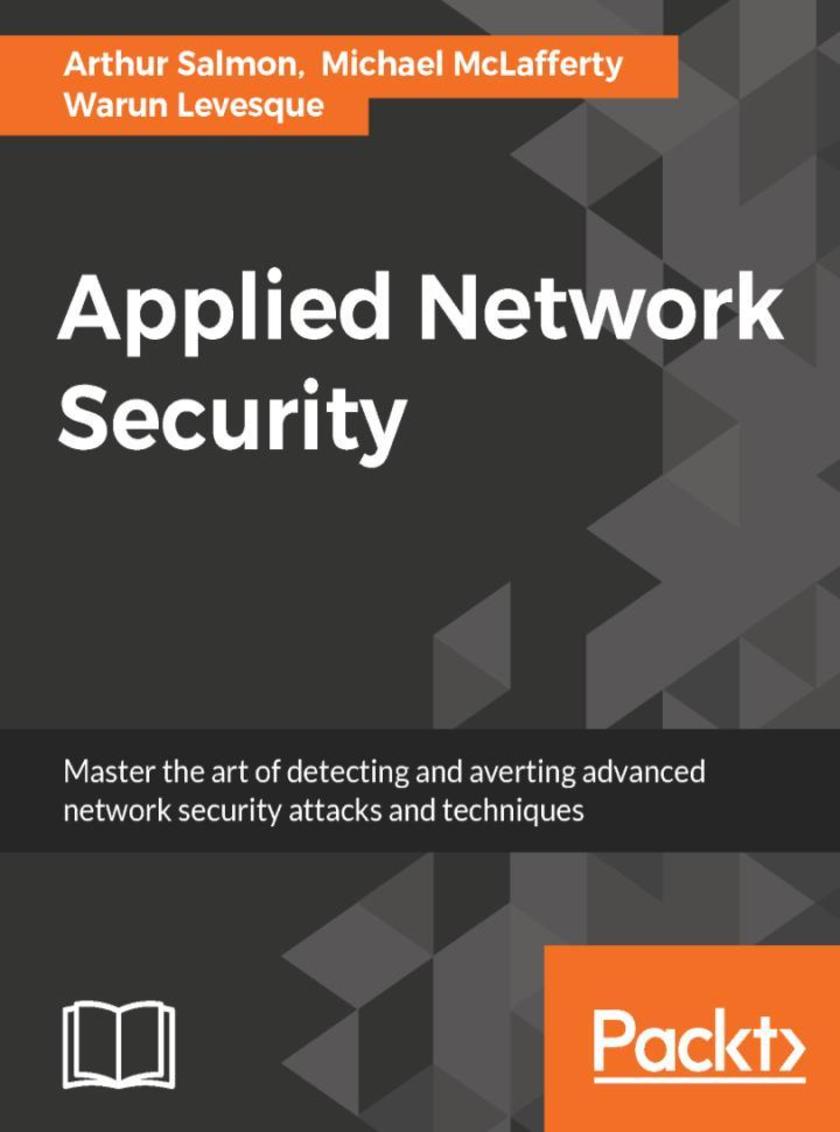
Applied Network Security
¥80.65
Master the art of detecting and averting advanced network security attacks and techniques About This Book ?Deep dive into the advanced network security attacks and techniques by leveraging tools such as Kali Linux 2, MetaSploit, Nmap, and Wireshark ?Become an expert in cracking WiFi passwords, penetrating anti-virus networks, sniffing the network, and USB hacks ?This step-by-step guide shows you how to confidently and quickly detect vulnerabilities for your network before the hacker does Who This Book Is For This book is for network security professionals, cyber security professionals, and Pentesters who are well versed with fundamentals of network security and now want to master it. So whether you're a cyber security professional, hobbyist, business manager, or student aspiring to becoming an ethical hacker or just want to learn more about the cyber security aspect of the IT industry, then this book is definitely for you. What You Will Learn ?Use SET to clone webpages including the login page ?Understand the concept of Wi-Fi cracking and use PCAP file to obtain passwords ?Attack using a USB as payload injector ?Familiarize yourself with the process of trojan attacks ?Use Shodan to identify honeypots, rogue access points, vulnerable webcams, and other exploits found in the database ?Explore various tools for wireless penetration testing and auditing ?Create an evil twin to intercept network traffic ?Identify human patterns in networks attacks In Detail Computer networks are increasing at an exponential rate and the most
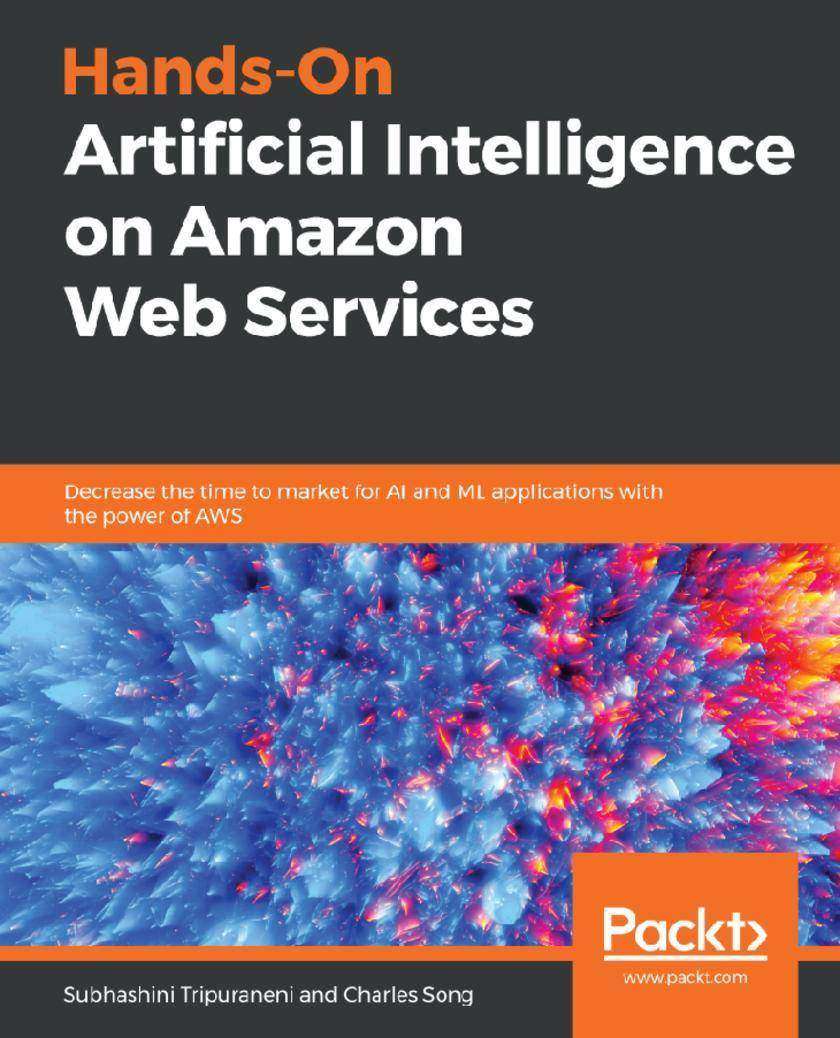
Hands-On Artificial Intelligence on Amazon Web Services
¥80.65
Perform cloud-based machine learning and deep learning using Amazon Web Services such as SageMaker, Lex, Comprehend, Translate, and Polly Key Features * Explore popular machine learning and deep learning services with their underlying algorithms * Discover readily available artificial intelligence(AI) APIs on AWS like Vision and Language Services * Design robust architectures to enable experimentation, extensibility, and maintainability of AI apps Book Description From data wrangling through to translating text, you can accomplish this and more with the artificial intelligence and machine learning services available on AWS. With this book, you’ll work through hands-on exercises and learn to use these services to solve real-world problems. You’ll even design, develop, monitor, and maintain machine and deep learning models on AWS. The book starts with an introduction to AI and its applications in different industries, along with an overview of AWS artificial intelligence and machine learning services. You’ll then get to grips with detecting and translating text with Amazon Rekognition and Amazon Translate. The book will assist you in performing speech-to-text with Amazon Transcribe and Amazon Polly. Later, you’ll discover the use of Amazon Comprehend for extracting information from text, and Amazon Lex for building voice chatbots. You will also understand the key capabilities of Amazon SageMaker such as wrangling big data, discovering topics in text collections, and classifying images. Finally, you’ll cover sales forecasting with deep learning and autoregression, before exploring the importance of a feedback loop in machine learning. By the end of this book, you will have the skills you need to implement AI in AWS through hands-on exercises that cover all aspects of the ML model life cycle. What you will learn * Gain useful insights into different machine and deep learning models * Build and deploy robust deep learning systems to production * Train machine and deep learning models with diverse infrastructure specifications * Scale AI apps without dealing with the complexity of managing the underlying infrastructure * Monitor and Manage AI experiments efficiently * Create AI apps using AWS pre-trained AI services Who this book is for This book is for data scientists, machine learning developers, deep learning researchers, and artificial intelligence enthusiasts who want to harness the power of AWS to implement powerful artificial intelligence solutions. A basic understanding of machine learning concepts is expected.
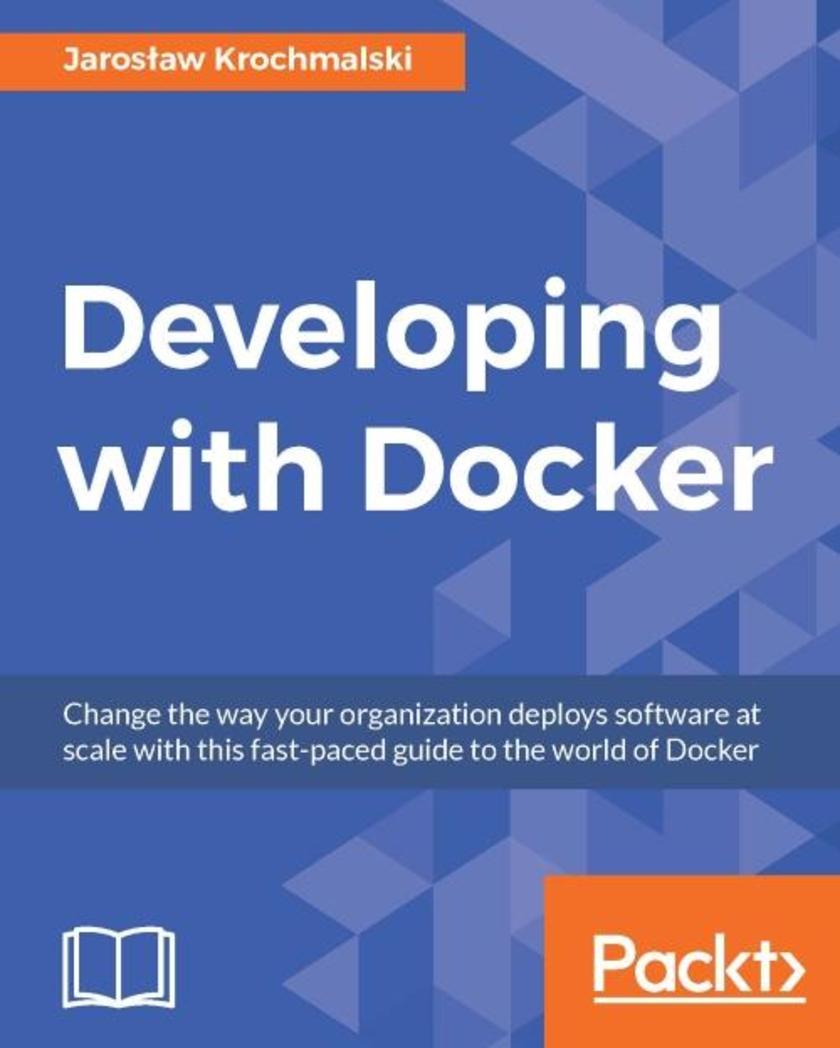
Developing with Docker
¥80.65
Change the way your organization deploys software at scale with this face paced guide to the world of Docker About This Book Cut through the noise and in simple terms learn to package your applications and test, ship, and scale your containers Find and build images and successfully run your programs within containers Build, deploy, and test your Docker containers and put them to work in production Who This Book Is For This book is for IT professionals, system administrators, and DevOps professionals or anyone looking to quickly develop and deploy software to production at scale. If you are interested in Docker, DevOps, or containers in general, don’t look any further. What You Will Learn Understand Docker’s architecture Build, ship, and run distributed applications Deploy, automate, and manage the execution of applications within Docker Scale and virtualize images and containers Utilize the networking features that Docker offers Use repositories to store and retrieve images In Detail This fast-paced practical guide will get you up and running with Docker. Using Docker, you will be able to build, ship, and run many distributed applications in real time. You will start with quickly installing Docker and start working with images and containers. We will present different types of containers and their applications, and show you how to find and build images. You will learn how you can contribute to the image repository by publishing different images. This will familiarize you with the image building process and you will be able to successfully run your programs within containers. By finishing this book, you will be well equipped in deploying your applications using Docker and will have a clear understanding of concepts, techniques, and practical methods to get it running in production systems. Style and approach This book takes a fast-paced practical approach that quickly gets you up and running with Docker so that you spend less time learning and more time deploying Docker containers effectively. This book contains a mix of concepts, practical examples, techniques, and the most up-to-date content to run things effectively in production. We’ll show you the easiest way to speed up your development and deployment with Docker.

MEAN Web Development - Second Edition
¥80.65
Develop your real-time MEAN application efficiently using a combination of MongoDB, Express, Angular, and Node About This Book Construct a fully-functional MEAN application by using its components along with the best third-party modules Harness the power of the JavaScript ecosystem to effectively run, build, and test your MEAN application Gain a deep, practical understanding of real-time web application development through real-world examples Who This Book Is For If you are a JavaScript developer who is interested in building modern web applications using MongoDB, Express, Angular 2, and Node 5.0, then this book is for you. You only need knowledge of JavaScript development. What You Will Learn Use MongoDB to store and retrieve your application's data Connect your Express application to MongoDB and use the Mongoose module Manage your users' authentication and offer them diverse login options using Passport Structure and use an Angular 2 application in your MEAN project Use Socket.io to create real-time communication between your client and server Test your application's Express and Angular 2 entities In Detail The MEAN stack is a collection of the most popular modern tools for web development that helps you build fast, robust, and maintainable web applications. Starting with the MEAN core frameworks, this pragmatic guide will explain the key concepts of each framework, how to set them up properly, and how to use popular modules to connect it all together. By following the real-world examples shown in this tutorial, you will scaffold your MEAN application architecture, add an authentication layer, and develop an MVC structure to support your project development. You will learn the best practices of maintaining clear and simple code and will see how to avoid common pitfalls. Finally, you will walk through the different tools and frameworks that will help expedite your daily development cycles. Watch how your application development grows by learning from the only guide that is solely orientated towards building a full, end-to-end, real-time application using the MEAN stack! Style and approach This comprehensive guide covers every part of the MEAN stack, and focuses on the gestalt power of the apps they can create through practical, real-world examples
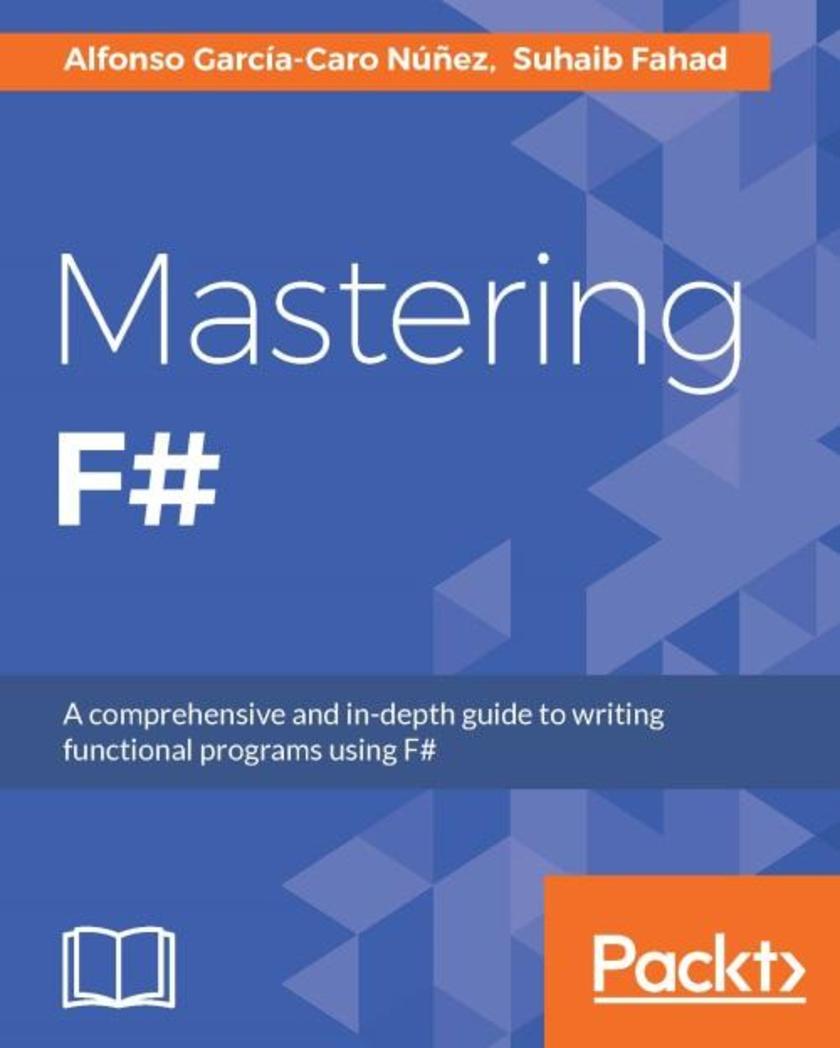
Mastering F#
¥80.65
A comprehensive and in-depth guide to writing functional programs using F# About This Book Learn how to manage, run, and automate your servers using Puppet Explore how to use F# to develop large-scale applications quickly and simply, and become more productive in today’s age of cloud computing and multi-core programming This easy-to-follow guide is packed with real-world examples that will jump-start you with F# development on the .NET platform Who This Book Is For If you are a C# developer with a basic knowledge of F# and want to explore the functional programming paradigm further to master your F# skills, then this book is for you. What You Will Learn Understand the basics of F# and organize F# source code with Visual Studio Work with F# data structures and create functional data structures in F# interoperate with C# Build and use asynchronous programming patterns with F# Create and use type providers that help perform data analysis from within Visual Studio Develop applications with pure F# code in WPF or ASP.NET MVC Find out how to perform distributed programming with ServiceBus or ZeroMQ Visualize data with charts, and work with Excel and R language Type providers In Detail F# is a multi-paradigm programming language that encompasses object-oriented, imperative, and functional programming language properties. Now adopted in a wide range of application areas and is supported both by industry-leading companies who provide professional tools and by an active open community, F# is rapidly gaining popularity as it emerges in digital music advertising, creating music-focused ads for Spotify, Pandora, Shazam, and anywhere on the web. This book will guide you through the basics and will then help you master F#. The book starts by explaining how to use F# with Visual Studio, file ordering, and the differences between F# and C# in terms of usage. It moves on to explain the functional core of F# such as data types, type declarations, immutability, strong type interference, pattern matching, records, F# data structures, sequence expressions, and lazy evaluation. Next, the book takes you through imperative and asynchronous programming, F# type providers, applications, and testing in F#. Finally, we look into using F# with distributed programming and using F# as a suitable language for data science. In short, this book will help you learn F# for real-world applications and increase your productivity with functional programming. Style and approach This easy-to-follow guide with syntaxes will help you master the concepts of F#. Packed with in-depth examples of real-world uses, this book covers each topic in detail with a reference to C#, so you will understand the difference between the languages.
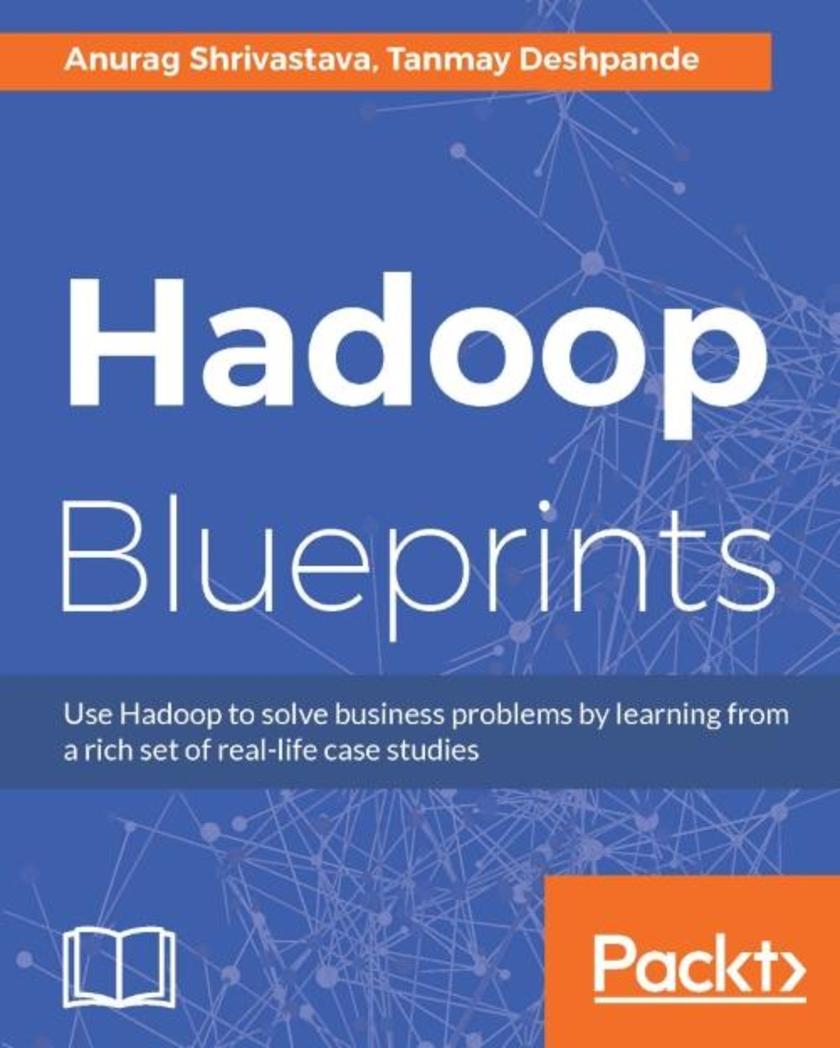
Hadoop Blueprints
¥80.65
Use Hadoop to solve business problems by learning from a rich set of real-life case studies About This Book Solve real-world business problems using Hadoop and other Big Data technologies Build efficient data lakes in Hadoop, and develop systems for various business cases like improving marketing campaigns, fraud detection, and more Power packed with six case studies to get you going with Hadoop for Business Intelligence Who This Book Is For If you are interested in building efficient business solutions using Hadoop, this is the book for you This book assumes that you have basic knowledge of Hadoop, Java, and any *ing language. What You Will Learn Learn about the evolution of Hadoop as the big data platform Understand the basics of Hadoop architecture Build a 360 degree view of your customer using Sqoop and Hive Build and run classification models on Hadoop using BigML Use Spark and Hadoop to build a fraud detection system Develop a churn detection system using Java and MapReduce Build an IoT-based data collection and visualization system Get to grips with building a Hadoop-based Data Lake for large enterprises Learn about the coexistence of NoSQL and In-Memory databases in the Hadoop ecosystem In Detail If you have a basic understanding of Hadoop and want to put your knowledge to use to build fantastic Big Data solutions for business, then this book is for you. Build six real-life, end-to-end solutions using the tools in the Hadoop ecosystem, and take your knowledge of Hadoop to the next level. Start off by understanding various business problems which can be solved using Hadoop. You will also get acquainted with the common architectural patterns which are used to build Hadoop-based solutions. Build a 360-degree view of the customer by working with different types of data, and build an efficient fraud detection system for a financial institution. You will also develop a system in Hadoop to improve the effectiveness of marketing campaigns. Build a churn detection system for a telecom company, develop an Internet of Things (IoT) system to monitor the environment in a factory, and build a data lake – all making use of the concepts and techniques mentioned in this book. The book covers other technologies and frameworks like Apache Spark, Hive, Sqoop, and more, and how they can be used in conjunction with Hadoop. You will be able to try out the solutions explained in the book and use the knowledge gained to extend them further in your own problem space. Style and approach This is an example-driven book where each chapter covers a single business problem and describes its solution by explaining the structure of a dataset and tools required to process it. Every project is demonstrated with a step-by-step approach, and explained in a very easy-to-understand manner.
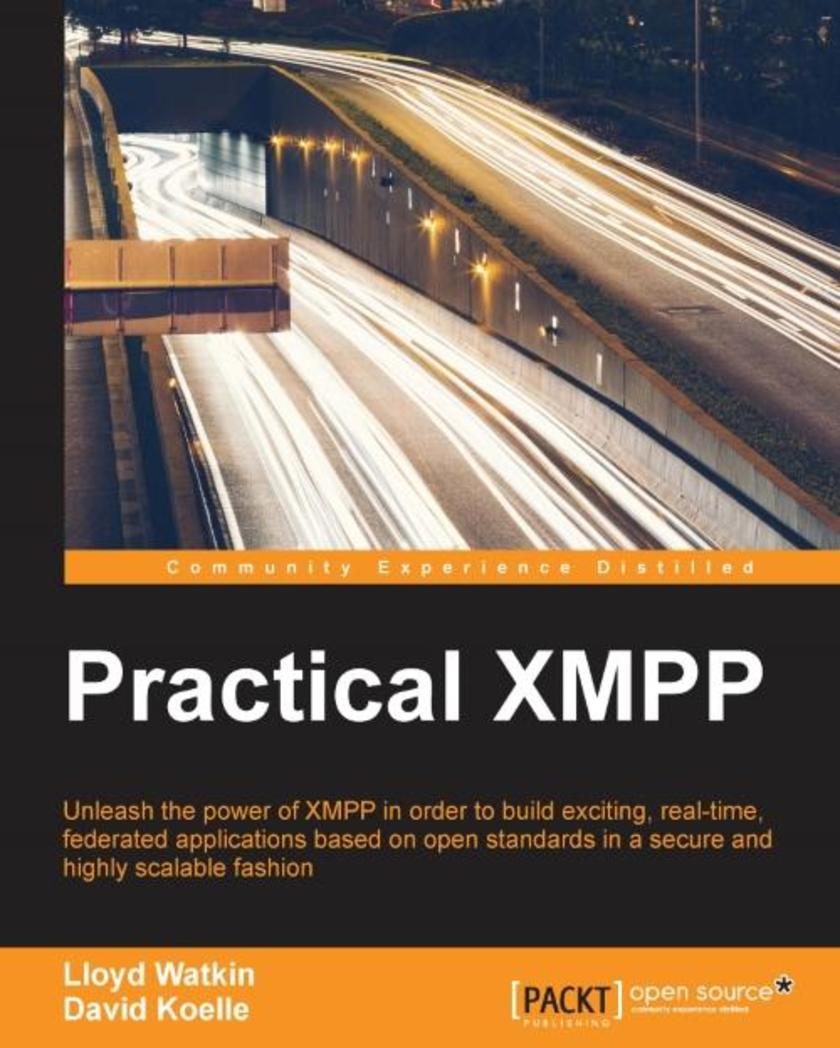
Practical XMPP
¥80.65
Unleash the power of XMPP in order to build exciting, real-time, federated applications based on open standards in a secure and highly scalable fashion About This Book Learn about the fundamentals of XMPP and be able to work with the core functionality both server-side and in the browser Build a simple 1-to-1 chat (the “Hello World” of XMPP), explore multi-user chat, publish subscribe systems, and work with a decentralized social network Author Lloyd Watkins is a member of the XMPP standards committee Who This Book Is For If you want to learn about the fundamentals of XMPP, be able to work with the core functionality both server-side and in the browser then this book is for you.No knowledge of XMPP is required, or of TCP/IP networking. It's important that you already know how to build applications of some form, and are looking get a better understanding of how to implement XMPP for one or more of its many uses. You should be interested in the decentralized web, know HTML, and likely know JavaScript and NodeJS. You will probably know JSON, and hopefully XML (this is the native output of XMPP). What You Will Learn Install and configure an XMPP server and use it to connect from a traditional desktop client and send a message Build a simple server-side application that will respond to messages from our logged in desktop client Install and run XMPP-FTW, connect to the server from the browser, and handle incoming/outgoing messages Connect to a multi-user chat room, send/receive stanzas, add a room password, join a protected room, set the room’s subject, and change a user's affiliation Get to grips with the publish-subscribe extension of XMPP and use it to build a pusher system that can make any website real-time Build a simple XMPP component and create an extension for XMPP-FTW that allows you to use your own custom format Build an XMPP version of the classic game “Pong” In Detail XMPP (eXtensible Messaging and Presence Protocol) is a messaging protocol that enables communication between two or more devices via the Internet. With this book, developers will learn about the fundamentals of XMPP, be able to work with the core functionality both server-side and in the browser, as well as starting to explore several of the protocol extensions. You will not only have a solid grasp of XMPP and how it works, but will also be able to use the protocol to build real-world applications that utilize the power of XMPP. By the end of this book, you will know more about networking applications in general, and have a good understanding of how to extend XMPP, as well as using it in sample applications. Style and approach Through a number of hands-on projects, this book shows you how to build usable applications that highlights a feature of XMPP.
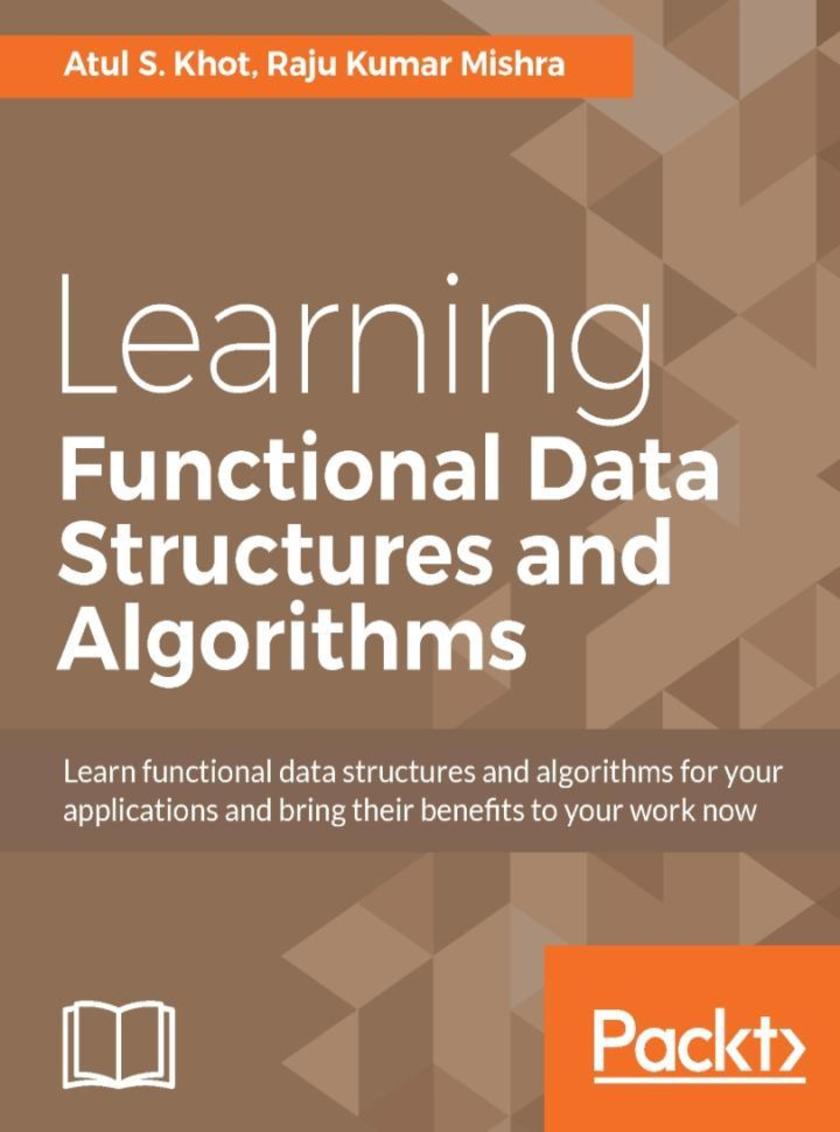
Learning Functional Data Structures and Algorithms
¥80.65
Learn functional data structures and algorithms for your applications and bring their benefits to your work now About This Book Moving from object-oriented programming to functional programmingThis book will help you get started with functional programming. Easy-to-understand explanations of practical topics will help you get started with functional data structures. Illustrative diagrams to explain the algorithms in detail. Get hands-on practice of Scala to get the most out of functional programming. Who This Book Is For This book is for those who have some experience in functional programming languages. The data structures in this book are primarily written in Scala, however implementing the algorithms in other functional languages should be straight forward. What You Will Learn Learn to think in the functional paradigm Understand common data structures and the associated algorithms, as well as the context in which they are commonly used Take a look at the runtime and space complexities with the O notation See how ADTs are implemented in a functional setting Explore the basic theme of immutability and persistent data structures Find out how the internal algorithms are redesigned to exploit structural sharing, so that the persistent data structures perform well, avoiding needless copying. Get to know functional features like lazy evaluation and recursion used to implement efficient algorithms Gain Scala best practices and idioms In Detail Functional data structures have the power to improve the codebase of an application and improve efficiency. With the advent of functional programming and with powerful functional languages such as Scala, Clojure and Elixir becoming part of important enterprise applications, functional data structures have gained an important place in the developer toolkit. Immutability is a cornerstone of functional programming. Immutable and persistent data structures are thread safe by definition and hence very appealing for writing robust concurrent programs. How do we express traditional algorithms in functional settingWon’t we end up copying too muchDo we trade performance for versioned data structuresThis book attempts to answer these questions by looking at functional implementations of traditional algorithms. It begins with a refresher and consolidation of what functional programming is all about. Next, you’ll get to know about Lists, the work horse data type for most functional languages. We show what structural sharing means and how it helps to make immutable data structures efficient and practical. Scala is the primary implementation languages for most of the examples. At times, we also present Clojure snippets to illustrate the underlying fundamental theme. While writing code, we use ADTs (abstract data types). Stacks, Queues, Trees and Graphs are all familiar ADTs. You will see how these ADTs are implemented in a functional setting. We look at implementation techniques like amortization and lazy evaluation to ensure efficiency. By the end of the book, you will be able to write efficient functional data structures and algorithms for your applications. Style and approach Step-by-step topics will help you get started with functional programming. Learn by doing with hands-on code snippets that give you practical experience of the subject.
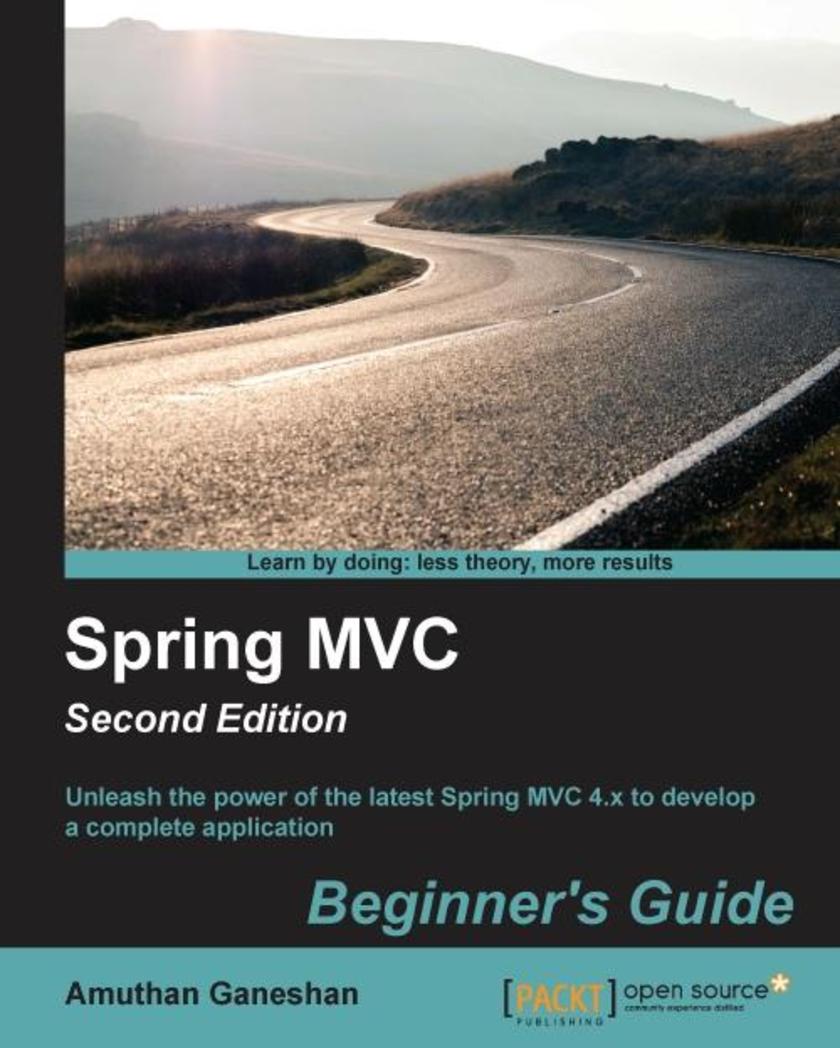
Spring MVC: Beginner's Guide - Second Edition
¥80.65
Unleash the power of the latest Spring MVC 4.x to develop a complete application About This Book Work through carefully crafted exercises with detailed explanations for each step will help you understand the concepts with ease You will gain a clear understanding of the end-to-end request/response life cycle, and each logical component’s responsibility This book is packed with tips and tricks that demonstrate industry best practices on developing a Spring-MVC-based application Who This Book Is For The book is for Java developers who want to exploit Spring MVC and its features to build web applications. Some familiarity with basic servlet programming concepts would be a plus, but is not a prerequisite. What You Will Learn Familiarize yourself with the anatomy of the Spring 4.X development environment Understand web application architecture and the Spring MVC request flow Integrate bean validation and custom validation Use error handling and exception resolving Get to grips with REST-based web service development and Ajax Test your web application In Detail Spring MVC helps you build flexible and loosely coupled web applications. The Spring MVC Framework is architected and designed in such a way that every piece of logic and functionality is highly configurable. Also, Spring can integrate effortlessly with other popular web frameworks such as Struts, WebWork, Java Server Faces, and Tapestry. The book progressively teaches you to configure the Spring development environment, architecture, controllers, libraries, and more before moving on to developing a full web application. It begins with an introduction to the Spring development environment and architecture so you're familiar with the know-hows. From here, we move on to controllers, views, validations, Spring Tag libraries, and more. Finally, we integrate it all together to develop a web application. You'll also get to grips with testing applications for reliability. Style and approach This book takes a pragmatic step-by-step approach to web application development using Spring MVC, with informative screenshots and concise explanation.
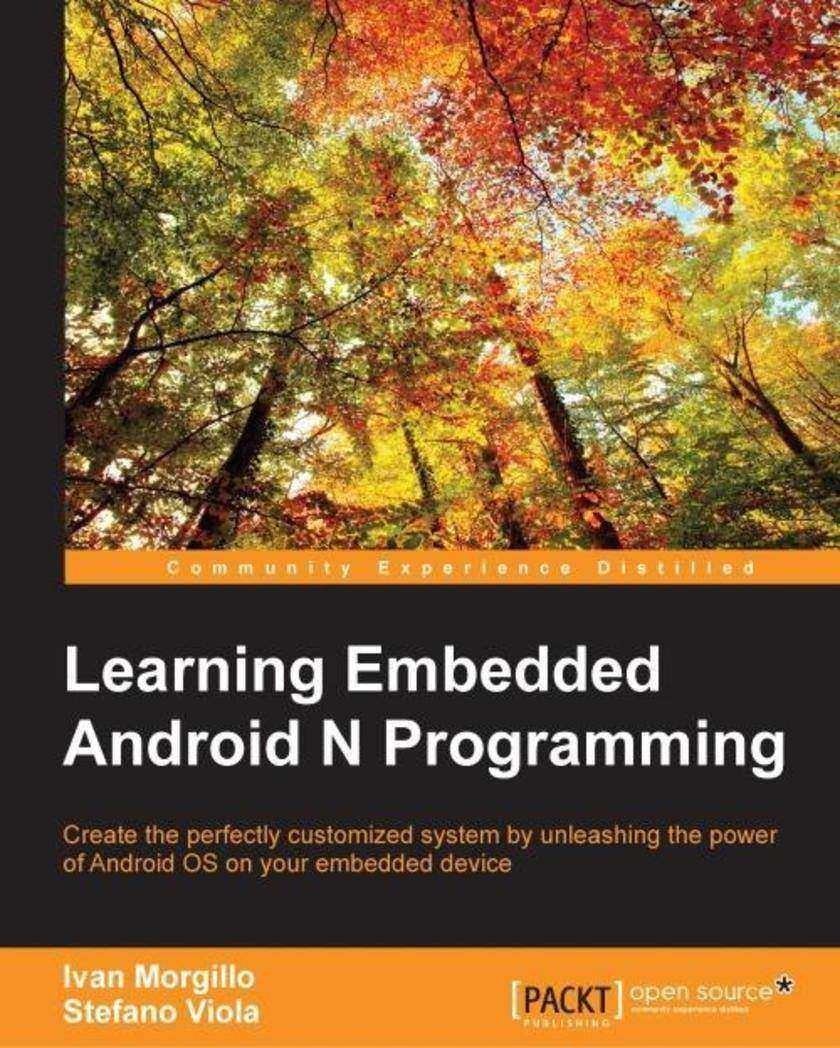
Learning Embedded Android N Programming
¥80.65
Create the perfectly customized system by unleashing the power of Android OS on your embedded device About This Book Understand the system architecture and how the source code is organized Explore the power of Android and customize the build system Build a fully customized Android version as per your requirements Who This Book Is For If you are a Java programmer who wants to customize, build, and deploy your own Android version using embedded programming, then this book is for you. What You Will Learn Master Android architecture and system design Obtain source code and understand the modular organization Customize and build your first system image for the Android emulator Level up and build your own Android system for a real-world device Use Android as a home automation and entertainment system Tailor your system with optimizations and add-ons Reach for the stars: look at the Internet of Things, entertainment, and domotics In Detail Take a deep dive into the Android build system and its customization with Learning Embedded Android Programming, written to help you master the steep learning curve of working with embedded Android. Start by exploring the basics of Android OS, discover Google’s “repo” system, and discover how to retrieve AOSP source code. You'll then find out to set up the build environment and the first AOSP system. Next, learn how to customize the boot sequence with a new animation, and use an Android “kitchen” to “cook” your custom ROM. By the end of the book, you'll be able to build customized Android open source projects by developing your own set of features. Style and approach This step-by-step guide is packed with various real-world examples to help you create a fully customized Android system with the most useful features available.
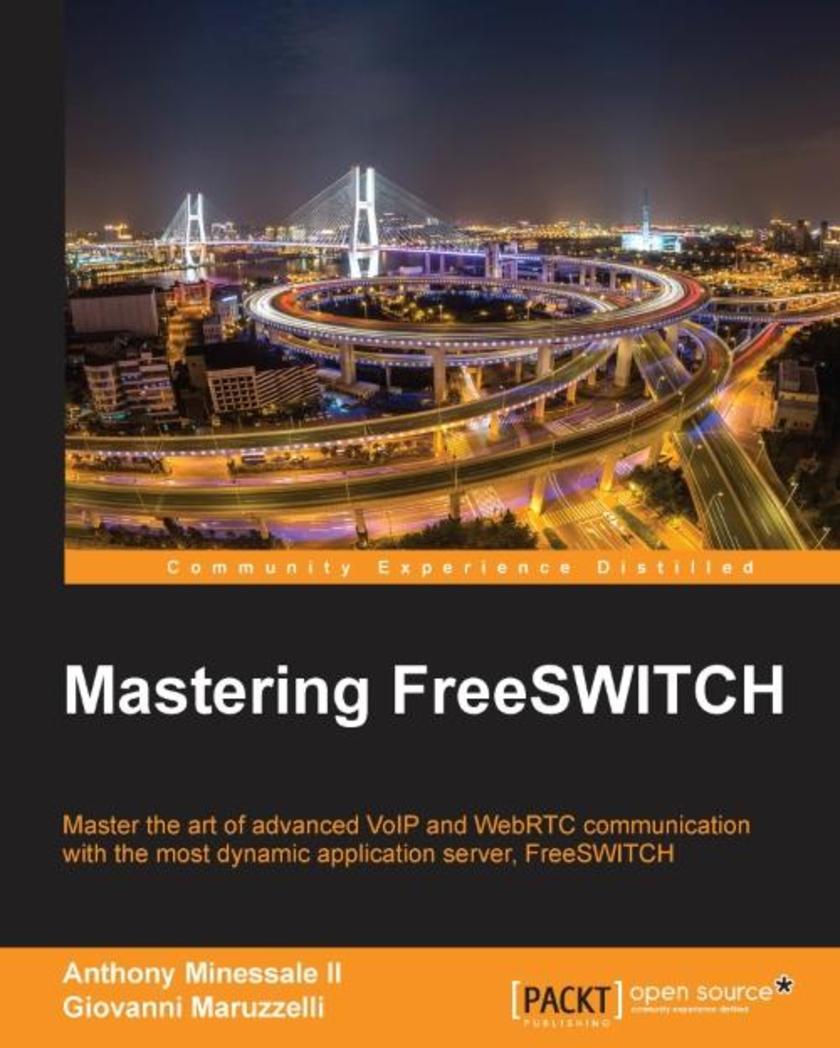
Mastering FreeSWITCH
¥80.65
Master the art of advanced VoIP and WebRTC communication with the most dynamic application server, FreeSWITCH About This Book Forget the hassle - make FreeSWITCH work for you Discover how FreeSWITCH integrates with a range of tools and APIs From high availability to IVR development use this book to become more confident with this useful communication software Who This Book Is For SysAdmins, VoIP engineers – whoever you are, whatever you’re trying to do, this book will help you get more from FreeSWITCH. What You Will Learn Get to grips with the core concepts of FreeSWITCH Learn FreeSWITCH high availability Work with SIP profiles, gateways, ITSPs, and Codecs optimization Implement effective security on your projects Master audio manipulation and recording Discover how FreeSWITCH works alongside WebRTC Build your own complex IVR and PBX applications Connect directly to PSTN/TDM Create your own FreeSWITCH module Trace SIP packets with the help of best open source tools Implement Homer Sipcapture to troubleshoot and debug all your platform traffic In Detail FreeSWITCH is one of the best tools around if you’re looking for a modern method of managing communication protocols through a range of different media. From real-time browser communication with the WebRTC API to implementing VoIP (voice over internet protocol), with FreeSWITCH you’re in full control of your projects. This book shows you how to unlock its full potential – more than just a tutorial, it’s packed with plenty of tips and tricks to make it work for you. Written by members of the team who actually helped build FreeSWITCH, it will guide you through some of the newest features of version 1.6 including video transcoding and conferencing. Find out how FreeSWITCH interacts with other tools and APIs, learn how to tackle common (and not so common) challenges ranging from high availability to IVR development and programming advanced PBXs. Great communication functionality begins with FreeSWITCH – find out how and get your project up and running today. Style and approach Find out how it works, then put your knowledge into practice - that's how this advanced FreeSWITCH guide has been designed to help you learn. You'll soon master FreeSWITCH and be confident using it in your projects.




 购物车
购物车 个人中心
个人中心



